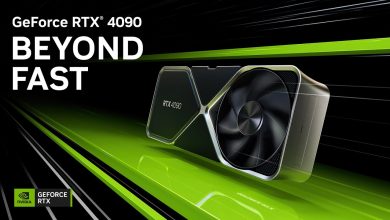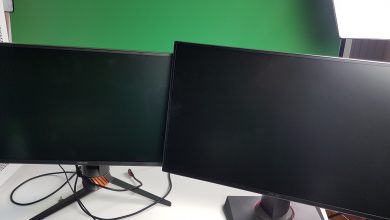Intel 10th Gen Desktop CPU Lineup Full Specs Confirmed
including a 5.3 GHz 10 Core i9
The full detailed and confirmed 10th Gen Intel CPU, code-named Comet Lake-s is out! Thanks to its already released laptop version, we already knew quite a bit about it.
Namely that it will be based, yet again, on the now well-aged 2015 Skylake micro-architecture. This is Intel’s 6th (and hopefully last) release of the 14nm architecture.
11 CPUs for the 10th Gen
Despite being based on an almost obsolete micro-architecture, we do have some novelties.
All K version of Core i3, i5, i7 and i9 feature a 125 Watts TDP hinting at a much higher clocks. With 5.1 and 5.2 GHz single Core base clocks, one could dream of an easy 5.5 GHz overclock.
Intel Core i9-10900K – 10 Cores, Up To 5.3 GHz Single-Core, 4.9 GHz All-Core
That’s about all you need to know about the Intel’s incoming flagship CPU. For the first time ever, Intel will release a 10 Cores, 20 threads processor.
Videocardz leaked some of its features below:
- Up to 4.8 GHz All-Core Turbo
- Up to 5.3 / 4.0 GHz Thermal Velocity Boost Singe / All-core Turbo
- Up to 5.2 GHz Intel Turbo Boost Max 3.0
- Up to 10C and 20T
- Up to DDR4-2933 MHz dual-channel
- Enhanced Core & Memory Overclocking
- Active Core Group Tuning
Thermal Velocity Boost
That feature is rather interesting. On supported CPUs, when coupled with high end cooling solution, the processor will allow higher multi-core speeds. With TVB, the Core i9-10900K can theoretically reach 5.3 GHz single-Core / 4.9 GHz Multi-core.
But only high-end cooling solutions (i.e.: custom water cooling loops) can hope to maintain such clocks. Otherwise, expect short bursts rather than consistent performance gain.
The i7-10800K will feautre 8 Cores , 5.1 GHz Single-Core, 4.7 GHz All-Core
Probably my favorite CPU of the line-up and the biggest performance boost from its predecessor.
The Intel Core i7-10700K would be featuring 8 cores and 16 threads. The chip would house 16 MB of total cache and a TDP of 125W. The chip would feature a base clock of 3.8 GHz, a boost clock of 5.0 GHz (single-core) and 5.1 GHz (single-core) with Turbo Boost Max 3.0. The chip will be 100 MHz faster in single-core but slower across all-cores by 100 MHz than the Core i9-9900K which retails for over $500 US. Since this is an i7 part, expect pricing to fall around $350-$400 US.
Intel Core i5-10600K – 6 Cores, Up To 4.8 GHz Single-Core, 4.5 GHz All-Core
The Intel Core i7-10600K would be featuring 6 cores and 12 threads. The chip would house 12 MB of total cache and a TDP of 125W. The chip would feature a base clock of 4.1 GHz, a boost clock of 4.8 GHz (single-core) and 4.5 GHz (all-core). The chip would be faster than the 8th Gen flagship, the Core i7-8700K, featuring a higher base and boost clock across a single and all-cores. The Core i5 should be retailing in the $220-$270 US segment which is a decent price for a fast 6 core and multi-threaded chip.
Intel 10th Gen Core Comet Lake Desktop CPU Family:
| CPU Name | Cores / Threads | Base Clock | Single-Core Boost Clock | Turbo Boost Max 3.0 (Single-Core) | All Core Boost Clock | Cache | TDP | Price |
|---|---|---|---|---|---|---|---|---|
| Intel Core i9-10900K | 10/20 | 3.7 GHz | 5.1 GHz 5.3 GHz (Velocity) | 5.2 GHz | 4.8 GHz 4.9 GHz (Velocity) | 20 MB | 125W | TBD |
| Intel Core i9-10900 | 10/20 | 2.8 GHz | 5.0 GHz 5.2 GHz (Velocity) | 5.1 GHz | 4.5 GHz 4.6 GHz (Velocity) | 20 MB | 65W | TBD |
| Intel Core i9-10900T | 10/20 | 2.0 GHz | 4.5 GHz | TBD | TBD | 20 MB | 35W | TBD |
| Intel Core i7-10700K | 8/16 | 3.8 GHz | 5.0 GHz | 5.1 GHz | 4.7 GHz | 16 MB | 125W | TBD |
| Intel Core i7-10700 | 8/16 | 2.9 GHz | 4.7 GHz | 4.6 GHz | 4.8 GHz | 16 MB | 65W | TBD |
| Intel Core i7-10700T | 8/16 | 2.0 GHz | 4.4 GHz | TBD | TBD | 16 MB | 35W | TBD |
| Intel Core i5-10600K | 6/12 | 4.1 GHz | 4.8 GHz | N/A | 4.5 GHz | 12 MB | 125W | TBD |
| Intel Core i5-10600 | 6/12 | 3.3 GHz | 4.8 GHz | N/A | 4.4 GHz | 12 MB | 65W | TBD |
| Intel Core i5-10600T | 6/12 | 2.4 GHz | 4.0 GHz | N/A | TBD | 12 MB | 35W | TBD |
| Intel Core i5-10500 | 6/12 | 3.1 GHz | 4.5 GHz | N/A | 4.2 GHz | 12 MB | 65W | TBD |
| Intel Core i5-10500T | 6/12 | 2.3 GHz | 3.7 GHz | N/A | TBD | 12 MB | 35W | TBD |
| Intel Core i5-10400 | 6/12 | 2.9 GHz | 4.3 GHz | N/A | 4.0 GHz | 12 MB | 65W | TBD |
| Intel Core i3-10350K | 4/8 | TBD | TBD | N/A | TBD | 8 MB | 125W | TBD |
| Intel Core i3-10320 | 4/8 | 3.8 GHz | 4.6 GHz | N/A | 4.4 GHz | 8 MB | 65W | TBD |
| Intel Core i3-10300 | 4/8 | 3.7 GHz | 4.4 GHz | N/A | 4.2 GHz | 8 MB | 65W | TBD |
| Intel Core i3-10100 | 4/8 | 3.6 GHz | 4.3 GHz | N/A | 4.1 GHz | 8 MB | 65W | TBD |
| Intel Core i3-10100T | 4/8 | 2.3 GHz | 3.6 GHz | N/A | TBD | 8 MB | 35W | TBD |
| Intel Pentium G6400 | 2/4 | 3.8 GHz | 3.8 GHz | N/A | TBD | 4 MB | 65W | TBD |
| Intel Pentium G6400T | 2/4 | 3.2 GHz | 3.2 GHz | N/A | TBD | 4 MB | 35W | TBD |
| Intel Celeron G5900 | 2/2 | 3.2 GHz | 3.2 GHz | N/A | TBD | 2 MB | 65W | TBD |
| Intel Celeron G5900T | 2/2 | 3.0 GHz | 3.0 GHz | N/A | TBD | 2 MB | 35W | TBD |
Intel 400-Series Platform and LGA 1200 Socket Support
It is now confirmed that Intel is indeed moving to a new socket with their 400-series boards that will be introduced next year too. While the LGA 1200 socket has the same dimensions as the LGA 1151 socket (37.5mm x 37.5mm), the socket keying has shifted to the left side and Comet Lake is no longer electrically or mechanically compatible with Coffee Lake motherboards. Some details of the new LGA 1200 package and socket for Comet Lake:
- Comet Lake will transition to a higher pin-count package
- Comet Lake LGA will not have backward compatibility with legacy platforms
- No changes to ILM dimensions or thermal solution retention
- Comet Lake LGA improves power delivery and support for future incremental I/O features
- Pin 1 orientation remains the same, but socket keying has shifted left
Blueprints of the LGA 1200 socket (H5) have also been leaked by Momomo_Us, showing the design of the new socket itself and comparing it to the existing LGA 1151 socket (H4).
The pin and socket specific changes between the H5 LGA 1200 and the H4 LGA 1151 socket are detailed in the blueprints posted above. (Image Credits: Momomo_US)
The good thing is that your existing coolers would still be compatible with the LGA 1200 socket so that’s one hardware change you shouldn’t be worrying about. The Comet Lake-S family will retain support for DDR4-2666 memory UDIMM and support up to 32 GB capacity DIMMs per channel, for a total of 128 GB in a dual channel configuration.
As in every new chipset generation, Intel plans to have several chipsets deployed in the 400-series family. There would obviously be Z490 which will target the ‘K’ unlocked SKUs I mentioned above, but aside from that we are looking at the W480 (Entry Workstation), Q470 (Corporate with Intel vPro), and H410 (Value) chipsets. These would target more corporate and entry tier users. Also interesting to note is that H410 is not pin-compatible with W480 and Q470 chipsets, which reveals a very cut down design for the entry-level chip.
Following are some of the main platform features of the 10th Generation Comet Lake-S family:
- Up To 10 processor cores for enhanced performance
- Up To 30 PCH-H High-Speed I/O lanes for port flexibility
- Up To 40 PCIe 3.0 Lanes (16 CPU, up to 24 PCH)
- Media & Display features for premium 4K content support
- Integrated + Discrete Intel Wireless-AC (Wi-Fi/BT CNVi) Support
- Intel Wi-Fi 6 (Gig+) Support
- Enhanced Core and memory overclock
- Integrated USB 3.2 Gen 2×1 (10 Gb/s) support
- Intel Rapid Storage Technology (Intel RST)
- Programmable (Open FW SDK) Quad-Core Audio DSP
- C10 & S0ix Support for Modern Standby
Intel 400-Series Chipset Family:
| Chipset Name | Intel Z490 | Intel W480 | Intel Q470 | Intel H410 |
|---|---|---|---|---|
| Total HSIO Lanes | 46 Lanes (16 CPI + 30 PCH) | 46 Lanes (16 CPI + 30 PCH) | 46 Lanes (16 CPI + 30 PCH) | 30 Lanes (16 CPI + 14 PCH) |
| Total PCIe 3.0 Lanes (CPU + PCH) | Up To 40 (16 CPU + | Up To 40 (16 CPU + | Up To 40 (16 CPU + | 22(16 CPU + 6 PCIe 2.0) |
| Chipset PCIe 3.0 Lanes | Up To 24 | Up To 24 | Up To 24 | 6 (PCIe 2.0 Only) |
| SATA 3.0 Ports | Up To 8 | Up To 8 | Up To 6 | 4 |
| Maximum USB 3.2 Ports Gen 2 (10 Gb/s) / Gen 1 (5 Gb/s) | 8/10 | 8/10 | 6/10 | 0/4 |
| Tota USB Ports (Maximum USB 3.2 Gen 1 (5 Gb/s)) | 14 (10) | 14 (10) | 14 (10) | 10 (4) |
| Intel RST Technology For PCIe 3.0 storage ports | 3 PCH | 3 PCH | 3 PCH | 0 |
| eSPI | 2 Chip Select | 2 Chip Select | 2 Chip Select | 1 Chip Select |
| Overclocking Support | Yes | N/A | N/A | N/A |
| Processor PCIe Express 3.0 Lanes Configuration | 1×16 or 2×8 or 1×8 + 2×4 | 1×16 or 2×8 or 1×8 + 2×4 | 1×16 or 2×8 or 1×8 + 2×4 | 1×16 |
| Display Support (Ports / Pipes) | 3/3 | 3/3 | 3/3 | 3/2 |
| DMI 3.0 Lanes | 4 | 4 | 4 | 4 (DMI 2.0 Only) |
| System Memory Channels / DPC | 2/2 (DDR4-2666) | 2/2 (DDR4-2666) | 2/2 (DDR4-2666) | 2/1 (DDR4-2666) |
In terms of chipset features, W480 would be the most feature-rich of the three chipsets that are mentioned here. Z490 would be the most appealing for the enthusiast and gaming audience, but let’s take a look at the mainstream chipsets. The W480 chipset would offer a total of 46 high-speed IO lanes and a total of 40 PCIe Gen 3.0 lanes. The CPUs would retain 16 lanes with the chipset offering up to 24 PCIe 3.0 lanes.
There would be support for up to 8 SATA III ports, 8 USB 3.2 Gen 2 ports or 10 USB 3.2 Gen 1 ports, 14 USB 3.2 Gen ports, and Intel RST. Neither of the three chipsets would feature overclock support since that is restricted to the Z490 chipset but we will get more information on overclocking later on from Intel themselves. Expect more information on the Z490 motherboards and Comet Lake-S desktop CPU family at CES 2020 where we should get more details about Intel’s next-gen desktop family roadmap. Our sources have pointed out a proper launch in February 2020.












One Comment